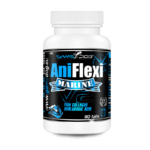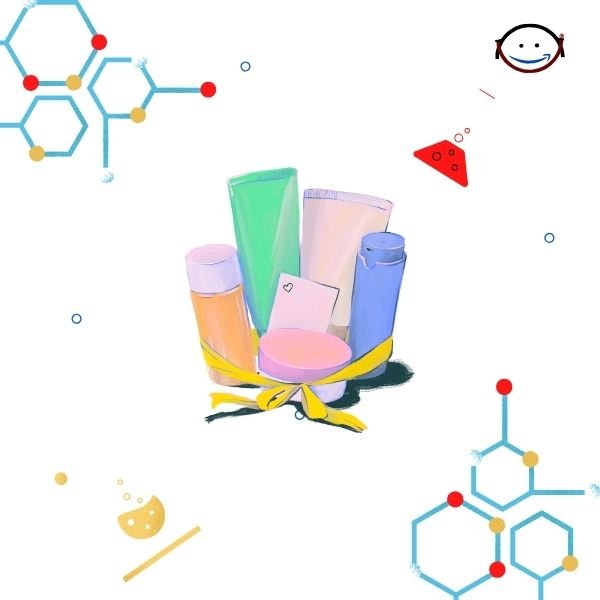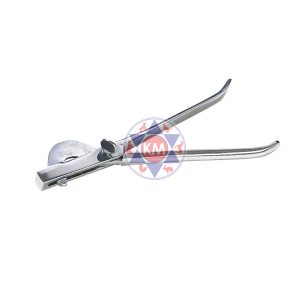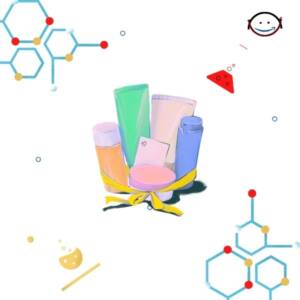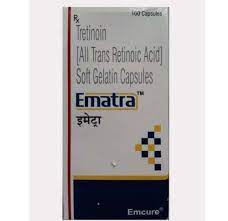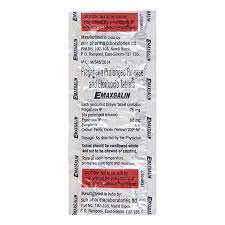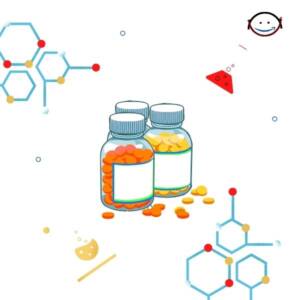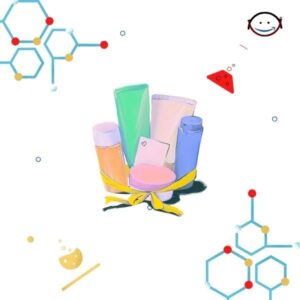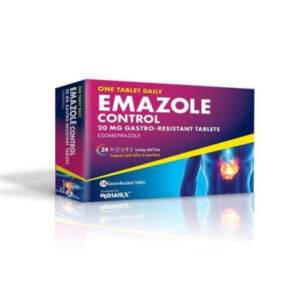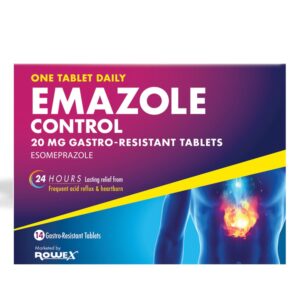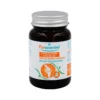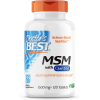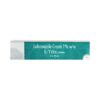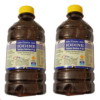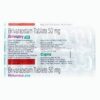-
RAZO L CAPSULE ₦6,842.25 QTY: 1
-
SOS FLEX CAPSULES 30CPS ₦24,586.00 QTY: 2
-
ACNESTAL 75GM SOAP ₦2,743.25 QTY: 1
-
DOLOSTAT PLUS R 200/20 MG CAPSULE 10 ₦1,464.50 QTY: 2
-
CND RescueRxx Daily Keratin Treatment Pen ₦44,608.01 QTY: 1
-
Doctor?s Best MSM with OptiMSM 1500 mg, 120 Tablets ₦46,800.00 QTY: 1
-
L-Trix Cream, 20gm ₦2,230.00 QTY: 1
-
IODINE TINCTURE I.P. 66 (Pack Of 2) (400ml Each) ₦832.00 QTY: 1
-
Sally Hansen Insta-Dri Nail Polish - Mauve It ₦11,800.00 QTY: 1
-
BRIVEPSY 50MG TAB 14`S ₦4,331.25 QTY: 1
-
FENOACT 200MG STRIP OF 10 CAPSULES ₦2,268.75 QTY: 1
Customer matched zone "Lagos Delivery Options"
Sort by:
106593–106608 of 366084 Results
-
SaleEmaquine SuspensionSku: 1738456844-2374
Emaquine Suspension
₦2,015.00Original price was: ₦2,015.00.₦1,560.00Current price is: ₦1,560.00.₦2,015.00Original price was: ₦2,015.00.₦1,560.00Current price is: ₦1,560.00. Add to basket Quick View -
Emasculator Plier SS31 cm Double CrushSku: 1736813393-783
Emasculator Plier SS31 cm Double Crush
₦0.00 -
-
-
SaleSku: 1737125282-7109
EMATRA 10 MG CAPSULE 100
₦206,062.50Original price was: ₦206,062.50.₦170,001.50Current price is: ₦170,001.50.₦206,062.50Original price was: ₦206,062.50.₦170,001.50Current price is: ₦170,001.50. Add to basket Quick View -
SaleSku: 1737125255-7108
EMAXGALIN 75/60MG STRIP OF 10 TABLETS
₦6,000.00Original price was: ₦6,000.00.₦4,950.00Current price is: ₦4,950.00.₦6,000.00Original price was: ₦6,000.00.₦4,950.00Current price is: ₦4,950.00. Add to basket Quick View -
-
-
-
SaleEmazid L 10 mg+5 mgThis is a combination of empagliflozin, a sodium-glucose co-transporter 2 (SGLT2) inhibitor and linagliptin, a dipeptidyl peptidase-4 (DPP-4) inhibitor, indicated as an adjunct to diet and exercise to improve glycemic control in adults with type 2 diabetes mellitus. Empagliflozin is indicated to reduce ... Read moreThis is a combination of empagliflozin, a sodium-glucose co-transporter 2 (SGLT2) inhibitor and linagliptin, a dipeptidyl peptidase-4 (DPP-4) inhibitor, indicated as an adjunct to diet and exercise to improve glycemic control in adults with type 2 diabetes mellitus. Empagliflozin is indicated to reduce the risk of cardiovascular death in adults with type 2 diabetes mellitus and established cardiovascular disease.Dosage of Emazid L 10 mg+5 mgAssess renal function before initiating and as clinically indicated. The recommended dose of this is 10 mg empagliflozin and 5 mg linagliptin once daily, taken in the morning, with or without food. Dose may be increased to 25 mg empagliflozin and 5 mg linagliptin once daily.Pediatric Patients: The safety and effectiveness in pediatric patients have not been established.Geriatric Patients: Higher incidence of adverse reactions related to volume depletion and reduced renal function.Renal Impairment: Higher incidence of adverse reactions related to reduced renal function.Side Effects of Emazid L 10 mg+5 mgThe most common side effects are: urinary tract infection stuffy or runny nose and sore throat upper respiratory tract infection Precautions & WarningsPancreatitis: There have been reports of acute pancreatitis, including fatal pancreatitis. If pancreatitis is suspected, promptly discontinue this tablet.Ketoacidosis: Assess patients who present with signs and symptoms of metabolic acidosis for ketoacidosis, regardless of blood glucose level. If suspected, discontinue this tablet, evaluate and treat promptly. Before initiating this tablet, consider risk factors for ketoacidosis. Patients on this tablet may require monitoring and temporary discontinuation of therapy in clinical situations known to predispose to ketoacidosis.Volume Depletion: Before initiating this tablet, assess volume status and renal function in patients with impaired renal function, elderly patients, or patients on loop diuretics. Monitor for signs and symptoms during therapy.Urosepsis and Pyelonephritis: Evaluate patients for signs and symptoms of urinary tract infections and treat promptly, if indicated.Hypoglycemia: Consider lowering the dose of insulin secretagogue or insulin to reduce the risk of hypoglycemia when initiating this tablet.Necrotizing Fasciitis of the Perineum (Fournier?s Gangrene): Serious, life-threatening cases have occurred in both females and males. Assess patients presenting with pain or tenderness, erythema, or swelling in the genital or perineal area, along with fever or malaise. If suspected, institute prompt treatment.Genital Mycotic Infections: Monitor and treat as appropriate.Hypersensitivity Reactions: Serious hypersensitivity reactions (e.g., anaphylaxis, angioedema, and exfoliative skin conditions) have occurred with empagliflozin and linagliptin. If hypersensitivity reactions occur, discontinue this tablet, treat promptly, and monitor until signs and symptoms resolve.Arthralgia: Severe and disabling arthralgia has been reported in patients taking DPP-4 inhibitors. Consider as a possible cause for severe joint pain and discontinue drug if appropriate.Bullous Pemphigoid: There have been reports of bullous pemphigoid requiring hospitalization. Tell patients to report the development of blisters or erosions. If bullous pemphigoid is suspected, discontinue this tablet.Heart Failure: Heart failure has been observed with two other members of the DPP-4 inhibitor class. Consider risks and benefits of this tablet in patients who have known risk factors for heart failure. Monitor for signs and symptoms.Storage ConditionsKeep below 30?C temperature, away from light & moisture. Keep out of the reach of children.Mode Of ActionEmpagliflozin: Sodium-glucose co-transporter 2 (SGLT2) is the predominant transporter responsible for the reabsorption of glucose from the glomerular filtrate back into the circulation. Empagliflozin is an inhibitor of SGLT2. By inhibiting SGLT2, empagliflozin reduces renal reabsorption of filtered glucose and lowers the renal threshold for glucose, and thereby increasing urinary glucose excretion. ? Linagliptin: Linagliptin is an inhibitor of DPP-4, an enzyme that degrades the incretin hormones glucagon-like peptide-1 (GLP-1) and glucose-dependent insulinotropic polypeptide (GIP). Thus, linagliptin increases the concentrations of active incretin hormones, stimulating the release of insulin in a glucose-dependent manner and decreasing the levels of glucagon in the circulation. Both incretin hormones are involved in the physiological regulation of glucose homeostasis. Incretin hormones are secreted at a low basal level throughout the day and levels rise immediately after meal intake. GLP-1 and GIP increase insulin biosynthesis and secretion from pancreatic beta cells in the presence of normal and elevated blood glucose levels. Furthermore, GLP-1 also reduces glucagon secretion from pancreatic alpha cells, resulting in a reduction in hepatic glucose output.PregnancyAdvise females of the potential risk to a fetus, especially during the second and third trimesters. This is not recommended when breastfeeding.Sku: 1736103567-3303
Emazid L10 mg+5 mg
₦16,500.00Original price was: ₦16,500.00.₦15,015.00Current price is: ₦15,015.00.₦16,500.00Original price was: ₦16,500.00.₦15,015.00Current price is: ₦15,015.00. Add to basket Quick View -
SaleEmazid M 5 mg+500 mgThis tablet is indicated for the treatment of adults with type 2 diabetes mellitus as an adjunct to diet and exercise: In patients insufficiently controlled on their maximally tolerated dose of Metformin alone In combination with other medicinal products for the treatment of diabetes, in patients insufficiently controlled with Metformin and these medicinal products ... Read moreThis tablet is indicated for the treatment of adults with type 2 diabetes mellitus as an adjunct to diet and exercise: In patients insufficiently controlled on their maximally tolerated dose of Metformin alone In combination with other medicinal products for the treatment of diabetes, in patients insufficiently controlled with Metformin and these medicinal products In patients already being treated with the combination of Empagliflozin and Metformin as separate tablets. Theropeutic ClassCombination Oral hypoglycemic preparationsPharmacologyEmpagliflozin is an inhibitor of Sodium-Glucose Co-Transporter 2 (SGLT2). SGLT2 is the predominant transporter, responsible for reabsorption of glucose from the kidney back into the circulation. By inhibiting SGLT2, Empagliflozin reduces renal reabsorption of filtered glucose and lowers the renal threshold for glucose and thereby increases urinary glucose excretion.Metformin Hydrochloride is a biguanide type oral antihyperglycemic drug, used in the management of type 2 diabetes. It lowers both basal and postprandial plasma glucose. It does not produce hypoglycemia. Metformin Hydrochloride decreases hepatic glucose production, decreases intestinal absorption of glucose and improves insulin sensitivity by an increase in peripheral glucose uptake and utilization.Dosage & Administration of Emazid M 5 mg+500 mgThe dosage should be individualized based on effectiveness and tolerability. Take this combination twice daily with meals. Dose escalation should be gradual to reduce the gastrointestinal side effects due to Metformin Hydrochloride. Maximum recommended daily dose of Metformin Hydrochloride is 2000 mg and Empagliflozin is 25 mg.Recommended individualized starting dose: In patients on Metformin Hydrochloride, switch to this combination containing Empagliflozin 5 mg with a similar total daily dose of Metformin Hydrochloride. In patients on Empagliflozin, switch to this combination containing Metformin Hydrochloride 500 mg with a similar total daily dose of Empagliflozin. In patients already treated with Empagliflozin and Metformin Hydrochloride separately switch to this combination containing the same total daily doses of each component. In patients with volume depletion not previously treated with Empagliflozin, correct this condition before initiating this combination. Renal impaired patient: Assess renal function before initiating this combination. In patients with an eGFR below 45 mL/min/1.73 m2 is contraindicated.Dosage of Emazid M 5 mg+500 mgThe dosage should be individualized based on effectiveness and tolerability. Take this combination twice daily with meals. Dose escalation should be gradual to reduce the gastrointestinal side effects due to Metformin Hydrochloride. Maximum recommended daily dose of Metformin Hydrochloride is 2000 mg and Empagliflozin is 25 mg.Recommended individualized starting dose: In patients on Metformin Hydrochloride, switch to this combination containing Empagliflozin 5 mg with a similar total daily dose of Metformin Hydrochloride. In patients on Empagliflozin, switch to this combination containing Metformin Hydrochloride 500 mg with a similar total daily dose of Empagliflozin. In patients already treated with Empagliflozin and Metformin Hydrochloride separately switch to this combination containing the same total daily doses of each component. In patients with volume depletion not previously treated with Empagliflozin, correct this condition before initiating this combination. Renal impaired patient: Assess renal function before initiating this combination. In patients with an eGFR below 45 mL/min/1.73 m2 is contraindicated.Pediatric patients under 18 years of age: Safety and effectiveness in pediatric patients under 18 years of age have not been established.Interaction of Emazid M 5 mg+500 mgDiuretics: Co-administration of Empagliflozin with diuretics resulted in increased urine volume and frequency of voids, which might enhance the potential for volume depletion.Insulin or Insulin Secretagogues: Co-administration of Empagliflozin with insulin or insulin secretagogues increases the risk for hypoglycemia.Positive Urine Glucose Test: Monitoring glycemic control with urine glucose tests is not recommended in patients taking SGLT2 inhibitors. Use alternative methods to monitor glycemic control.Drugs that Reduce Metformin Clearance: Drugs that reduce Metformin clearance (such as ranolazine, vandetanib, dolutegravir, and cimetidine) may increase the accumulation of Metformin.Carbonic Anhydrase Inhibitors: Carbonic anhydrase inhibitors may increase risk of lactic acidosis.Drugs Affecting Glycemic Control: Thiazides and other diuretics, corticosteroids, phenothiazines, thyroid products, estrogens, oral contraceptives, phenytoin, nicotinic acid, sympathomimetics, calcium channel blocking drugs, and isoniazid produce hoperglycemia. When such drugs are administered to a patient receiving Empagliflozin and Metformin combination, the patient should be closely observed to maintain adequate glycemic control. When such drugs are withdrawn from a patient receiving Empagliflozin and Metformin combination, the patient should be observed closely for hypoglycemia.Alcohol: Alcohol can potentiate the effect of Metformin on lactate metabolism. Warn patients against excessive alcohol intake.Contraindications Hypersensitivity to Empagliflozin and Metformin Any type of acute metabolic acidosis (such as lactic acidosis, diabetic ketoacidosis) Diabetic pre-coma Severe renal failure (GFR 5%) are diarrhea, nausea/vomiting, flatulence, abdominal discomfort, indigestion, asthenia, and headache. The following important adverse reactions are given below: Very common: Hypoglycemia (when used with sulphonylurea or insulin), Gastrointestinal symptoms Common: Vaginal moniliasis, vulvovaginitis, balanitis and other genital infection. Urinary tract infection (including pyelonephritis and urosepsis), thirst, taste disturbance, pruritus (generalised), rash, Increased urination, serum lipids increased Uncommon: Volume depletion, urticaria, dysuria, blood creatinine increased/Glomerular filtration rate decreased, Haematocrit increased Rare: Diabetic ketoacidosis. Pregnancy & LactationAdvise females of the potential risk to a fetus especially during the second and third trimesters. This is not recommended when breastfeeding.Precautions & WarningsLactic Acidosis: Postmarketing cases of Metformin Hydrochloride-associated lactic acidosis. If lactic acidosis is suspected, general supportive measures should be instituted promptly in a hospital setting, along with immediate discontinuation of this combination. Hypotension: Before initiating this combination assess and correct volume status in patients with renal impairment, the elderly, in patients with low systolic blood pressure, and in patients on diuretics. Monitor for signs and symptoms of hypotension after initiating therapy and increase monitoring in clinical situations where volume contraction is expected. Ketoacidosis: Before initiating this combination assess patients who present with signs and symptoms of metabolic acidosis for ketoacidosis, regardless of blood glucose level. If suspected, discontinue this combination, evaluate and treat promptly. Acute kidney injury & impairment in renal function: Consider temporarily discontinuing this combination in settings of reduced oral intake or fluid losses. If acute kidney injury occurs, discontinue this combination promptly and institute treatment. Urosepsis, Pyelonephritis, Fournier?s gangrene & Genital mycotic infections: Treatment with SGLT2 inhibitors increases the risk for urinary tract infections. Evaluate patients for signs and symptoms of urinary tract infections and treat promptly, if indicated. Hypoglycemia: Consider lowering the dose of insulin secretagogue or insulin to reduce the risk of hypoglycemia when initiating this combination. Vitamin B12 Deficiency: Metformin Hydrochloride may lower vitamin B12 levels. Monitor hematologic parameters annually. Increased LDL-C: Monitor and treat as appropriate. Macrovascular Outcomes: There have been no clinical studies establishing conclusive evidence of macrovascular risk reduction with this combination.Overdose Effects of Emazid M 5 mg+500 mgIn controlled clinical studies single doses of up to 800 mg Empagliflozin (equivalent to 32-times the highest recommended daily dose) in healthy volunteers and multiple daily doses of up to 100 mg Empagliflozin (equivalent to 4-times the highest recommended daily dose) in patients with type 2 diabetes did not show any toxicity. Hypoglycaemia has not been seen with Metformin doses of up to 85 g, although lactic acidosis has occurred in such circumstances. Lactic acidosis is a medical emergency and must be treated in hospital. In the event of an overdose, treatment should be initiated as appropriate to the patient's clinical status. The most effective method to remove lactate and Metformin is haemodialysis. The removal of Empagliflozin by haemodialysis has not been studiedStorage ConditionsKeep below 30?C temperature, protected from light & moisture. Keep out of the reach of children.Use In Special PopulationsSafety and effectiveness in pediatric patients under 18 years of age have not been established.Drug ClassesCombination Oral hypoglycemic preparationsMode Of ActionEmpagliflozin is an inhibitor of Sodium-Glucose Co-Transporter 2 (SGLT2). SGLT2 is the predominant transporter, responsible for reabsorption of glucose from the kidney back into the circulation. By inhibiting SGLT2, Empagliflozin reduces renal reabsorption of filtered glucose and lowers the renal threshold for glucose and thereby increases urinary glucose excretion.Metformin Hydrochloride is a biguanide type oral antihyperglycemic drug, used in the management of type 2 diabetes. It lowers both basal and postprandial plasma glucose. It does not produce hypoglycemia. Metformin Hydrochloride decreases hepatic glucose production, decreases intestinal absorption of glucose and improves insulin sensitivity by an increase in peripheral glucose uptake and utilization.PregnancyAdvise females of the potential risk to a fetus especially during the second and third trimesters. This is not recommended when breastfeeding.Sku: 1736104990-3719
Emazid M5 mg+500 mg
₦8,250.00Original price was: ₦8,250.00.₦7,507.50Current price is: ₦7,507.50.₦8,250.00Original price was: ₦8,250.00.₦7,507.50Current price is: ₦7,507.50. Add to basket Quick View -
SaleEmazid 10 mgEmazid 10 mg is indicated in: As an adjunct to diet and exercise to improve glycemic control in adults with type 2 diabetes mellitus. To reduce the risk of cardiovascular death in adult patients with type 2 diabetes mellitus and established cardiovascular disease. Theropeutic ClassSodium-glucose Cotransporter-2 (SGLT2) InhibitorsPharmacologyEmazid 10 mg is a sodium glucose co-transporter-2 (SGLT-2) inhibitor. SGLT2 co-transporters are responsible for reabsorption of glucose from the glomerular filtrate in the kidney. The glucuretic effect resulting from SGLT2 inhibition reduces renal absorption and lowers the renal threshold for glucose, resulting in increased glucose excretion. Additionally, it contributes to reduced hyperglycaemia, assists weight loss, and reduces blood pressure.Dosage & Administration of Emazid 10 mgThe recommended dose of Emazid 10 mg is 10 mg once daily, taken in the morning, with or without food. In patients tolerating Emazid 10 mg, the dose may be increased to 25 mg once daily. In patients with volume depletion, correcting this condition prior to initiation of Emazid 10 mg is recommended.Dosage of Emazid 10 mgThe recommended dose of Emazid 10 mg is 10 mg once daily, taken in the morning, with or without food. In patients tolerating Emazid 10 mg, the dose may be increased to 25 mg once daily. In patients with volume depletion, correcting this condition prior to initiation of Emazid 10 mg is recommended.Interaction of Emazid 10 mgDiuretics: Co-administration of Emazid 10 mg with diuretics resulted in increased urine volume.?Insulin or Insulin Secretagogues: Co-administration of Emazid 10 mg with insulin or insulin secretagogues increases the risk for hypoglycemia.?Positive Urine Glucose Test: Monitoring glycemic control with urine glucose tests is not recommended in patients taking SGLT2 inhibitors as SGLT2 inhibitors increase urinary glucose excretion and will lead to positive urine glucose tests. Use alternative methods to monitor glycemic control.?Interference with 1,5-anhydroglucitol (1,5-AG) Assay: Monitoring glycemic control with 1,5-AG assay is not recommended as measurements of 1,5-AG are unreliable in assessing glycemic control in patients taking SGLT2 inhibitors. Use alternative methods to monitor glycemic control.ContraindicationsEmazid 10 mg is contraindicated in patients with history of serious hypersensitivity reaction to Emazid 10 mg or any of its ingredients, severe renal impairment, end-stage renal disease, or dialysis.Side Effects of Emazid 10 mgThe most common adverse reactions associated with Emazid 10 mg are urinary tract infections and female genital mycotic infections. Others common side effects includes dehydration, hypotension, weakness, dizziness and increased thirstiness.Pregnancy & LactationThere are no adequate and well-controlled studies of Emazid 10 mg in pregnant women. Emazid 10 mg should be used during pregnancy only if the potential benefit justifies the potential risk to the fetus. It is not known if Emazid 10 mg is excreted in human milk. It is not recommended when breastfeeding.Precautions & WarningsAssessment of renal function is recommended prior to initiation of Emazid 10 mg and periodically thereafter. Emazid 10 mg should not initiated in patients with an eGFR less than 45 ml/min/1.73 m2. No dose adjustment is needed in patients with an eGFR greater than or equal to 45 ml/min/1.73 m2.Overdose Effects of Emazid 10 mgIn the event of an overdose with Emazid 10 mg the usual supportive measures (e.g., remove unabsorbed material from the gastrointestinal tract, perform clinical monitoring, and institute supportive treatment) should be employed. Removal of Emazid 10 mg by hemodialysis has not been studied.Storage ConditionsKeep in a cool & dry place (below 30? C), protected from light & moisture. Keep out of the reach of children.Drug ClassesSodium-glucose Cotransporter-2 (SGLT2) InhibitorsMode Of ActionEmazid 10 mg is a sodium glucose co-transporter-2 (SGLT-2) inhibitor. SGLT2 co-transporters are responsible for reabsorption of glucose from the glomerular filtrate in the kidney. The glucuretic effect resulting from SGLT2 inhibition reduces renal absorption and lowers the renal threshold for glucose, resulting in increased glucose excretion. Additionally, it contributes to reduced hyperglycaemia, assists weight loss, and reduces blood pressure.PregnancyThere are no adequate and well-controlled studies of Emazid 10 mg in pregnant women. Emazid 10 mg should be used during pregnancy only if the potential benefit justifies the potential risk to the fetus. It is not known if Emazid 10 mg is excreted in human milk. It is not recommended when breastfeeding.Sku: 1736105239-3793
Emazid10 mg
₦13,750.00Original price was: ₦13,750.00.₦12,512.50Current price is: ₦12,512.50.₦13,750.00Original price was: ₦13,750.00.₦12,512.50Current price is: ₦12,512.50. Add to basket Quick View -
SaleEmazid 25 mgEmazid 25 mg is indicated in: As an adjunct to diet and exercise to improve glycemic control in adults with type 2 diabetes mellitus. To reduce the risk of cardiovascular death in adult patients with type 2 diabetes mellitus and established cardiovascular disease. Theropeutic ClassSodium-glucose Cotransporter-2 (SGLT2) InhibitorsPharmacologyEmazid 25 mg is a sodium glucose co-transporter-2 (SGLT-2) inhibitor. SGLT2 co-transporters are responsible for reabsorption of glucose from the glomerular filtrate in the kidney. The glucuretic effect resulting from SGLT2 inhibition reduces renal absorption and lowers the renal threshold for glucose, resulting in increased glucose excretion. Additionally, it contributes to reduced hyperglycaemia, assists weight loss, and reduces blood pressure.Dosage & Administration of Emazid 25 mgThe recommended dose of Emazid 25 mg is 10 mg once daily, taken in the morning, with or without food. In patients tolerating Emazid 25 mg, the dose may be increased to 25 mg once daily. In patients with volume depletion, correcting this condition prior to initiation of Emazid 25 mg is recommended.Dosage of Emazid 25 mgThe recommended dose of Emazid 25 mg is 10 mg once daily, taken in the morning, with or without food. In patients tolerating Emazid 25 mg, the dose may be increased to 25 mg once daily. In patients with volume depletion, correcting this condition prior to initiation of Emazid 25 mg is recommended.Interaction of Emazid 25 mgDiuretics: Co-administration of Emazid 25 mg with diuretics resulted in increased urine volume.?Insulin or Insulin Secretagogues: Co-administration of Emazid 25 mg with insulin or insulin secretagogues increases the risk for hypoglycemia.?Positive Urine Glucose Test: Monitoring glycemic control with urine glucose tests is not recommended in patients taking SGLT2 inhibitors as SGLT2 inhibitors increase urinary glucose excretion and will lead to positive urine glucose tests. Use alternative methods to monitor glycemic control.?Interference with 1,5-anhydroglucitol (1,5-AG) Assay: Monitoring glycemic control with 1,5-AG assay is not recommended as measurements of 1,5-AG are unreliable in assessing glycemic control in patients taking SGLT2 inhibitors. Use alternative methods to monitor glycemic control.ContraindicationsEmazid 25 mg is contraindicated in patients with history of serious hypersensitivity reaction to Emazid 25 mg or any of its ingredients, severe renal impairment, end-stage renal disease, or dialysis.Side Effects of Emazid 25 mgThe most common adverse reactions associated with Emazid 25 mg are urinary tract infections and female genital mycotic infections. Others common side effects includes dehydration, hypotension, weakness, dizziness and increased thirstiness.Pregnancy & LactationThere are no adequate and well-controlled studies of Emazid 25 mg in pregnant women. Emazid 25 mg should be used during pregnancy only if the potential benefit justifies the potential risk to the fetus. It is not known if Emazid 25 mg is excreted in human milk. It is not recommended when breastfeeding.Precautions & WarningsAssessment of renal function is recommended prior to initiation of Emazid 25 mg and periodically thereafter. Emazid 25 mg should not initiated in patients with an eGFR less than 45 ml/min/1.73 m2. No dose adjustment is needed in patients with an eGFR greater than or equal to 45 ml/min/1.73 m2.Overdose Effects of Emazid 25 mgIn the event of an overdose with Emazid 25 mg the usual supportive measures (e.g., remove unabsorbed material from the gastrointestinal tract, perform clinical monitoring, and institute supportive treatment) should be employed. Removal of Emazid 25 mg by hemodialysis has not been studied.Storage ConditionsKeep in a cool & dry place (below 30? C), protected from light & moisture. Keep out of the reach of children.Drug ClassesSodium-glucose Cotransporter-2 (SGLT2) InhibitorsMode Of ActionEmazid 25 mg is a sodium glucose co-transporter-2 (SGLT-2) inhibitor. SGLT2 co-transporters are responsible for reabsorption of glucose from the glomerular filtrate in the kidney. The glucuretic effect resulting from SGLT2 inhibition reduces renal absorption and lowers the renal threshold for glucose, resulting in increased glucose excretion. Additionally, it contributes to reduced hyperglycaemia, assists weight loss, and reduces blood pressure.PregnancyThere are no adequate and well-controlled studies of Emazid 25 mg in pregnant women. Emazid 25 mg should be used during pregnancy only if the potential benefit justifies the potential risk to the fetus. It is not known if Emazid 25 mg is excreted in human milk. It is not recommended when breastfeeding.Sku: 1736103952-3415
Emazid25 mg
₦22,000.00Original price was: ₦22,000.00.₦20,020.00Current price is: ₦20,020.00.₦22,000.00Original price was: ₦22,000.00.₦20,020.00Current price is: ₦20,020.00. Add to basket Quick View -
Emazole Control (Gastro-Resistant Tablets)Sku: 1715285764-1841
Emazole Control (Gastro-Resistant Tablets)
₦100.00 -
Emazole Control 20mg Gastro Resistant Tablets 14'sSku: 1731835318-2025
Emazole Control 20mg Gastro Resistant Tablets 14’s
₦0.00
